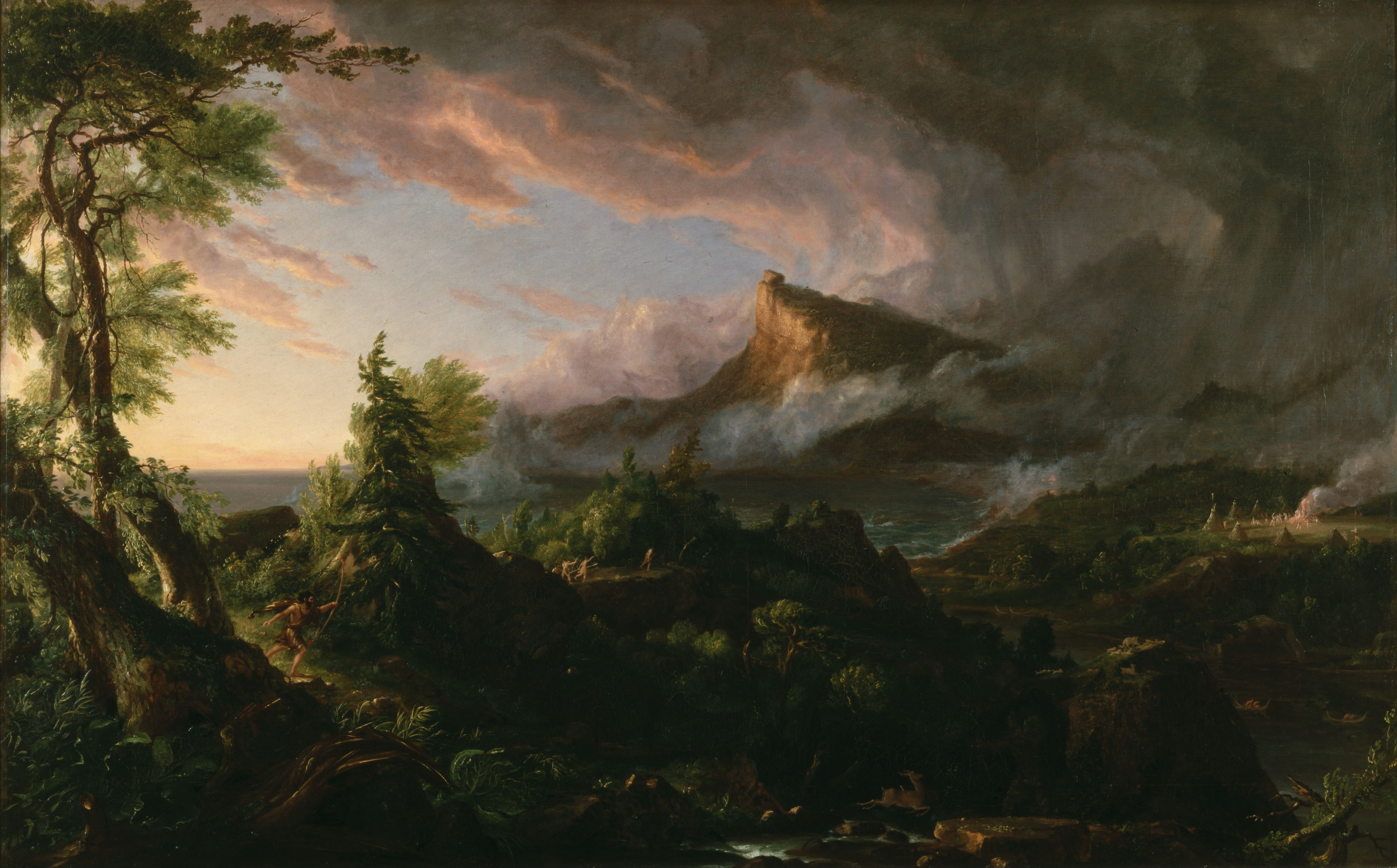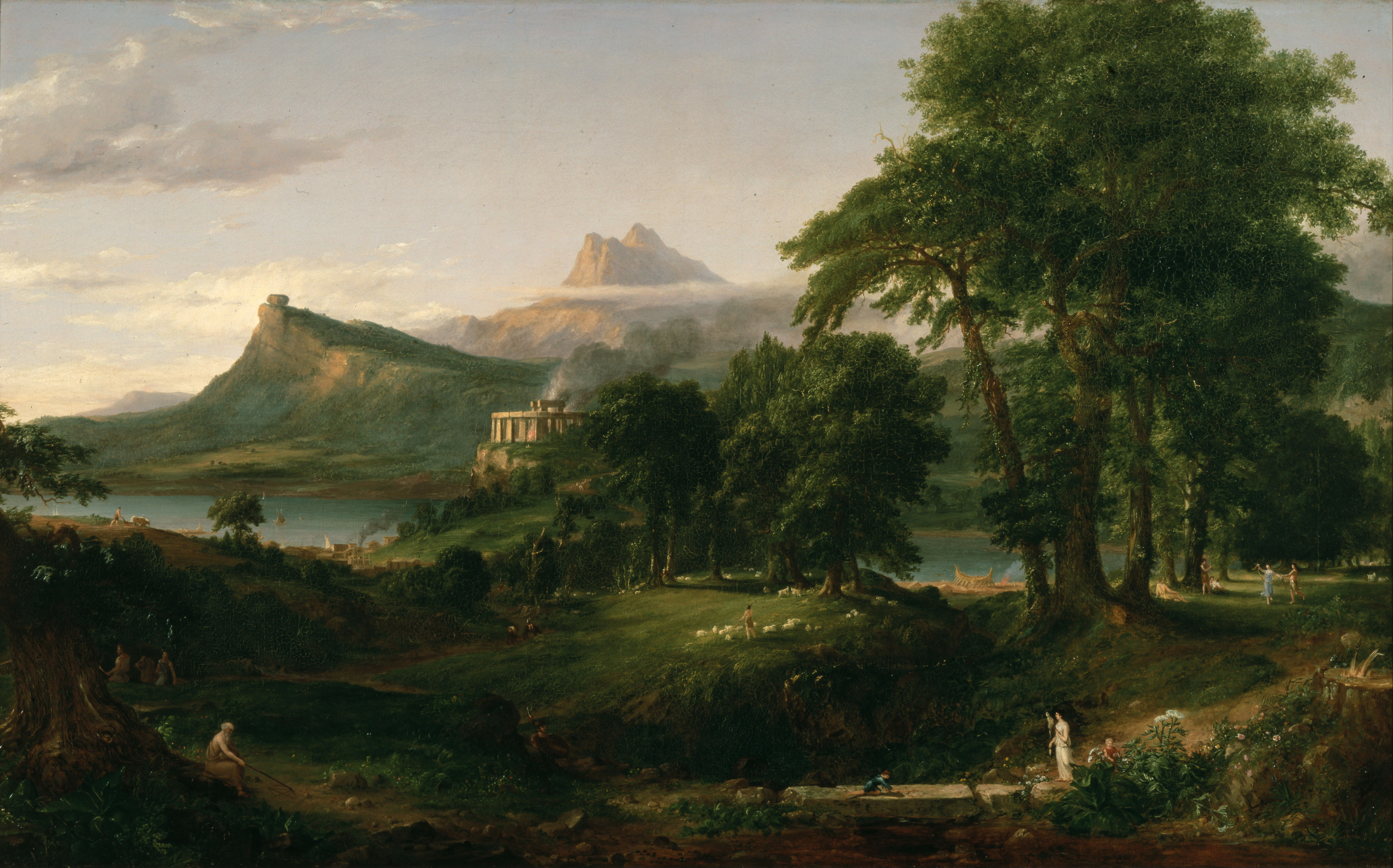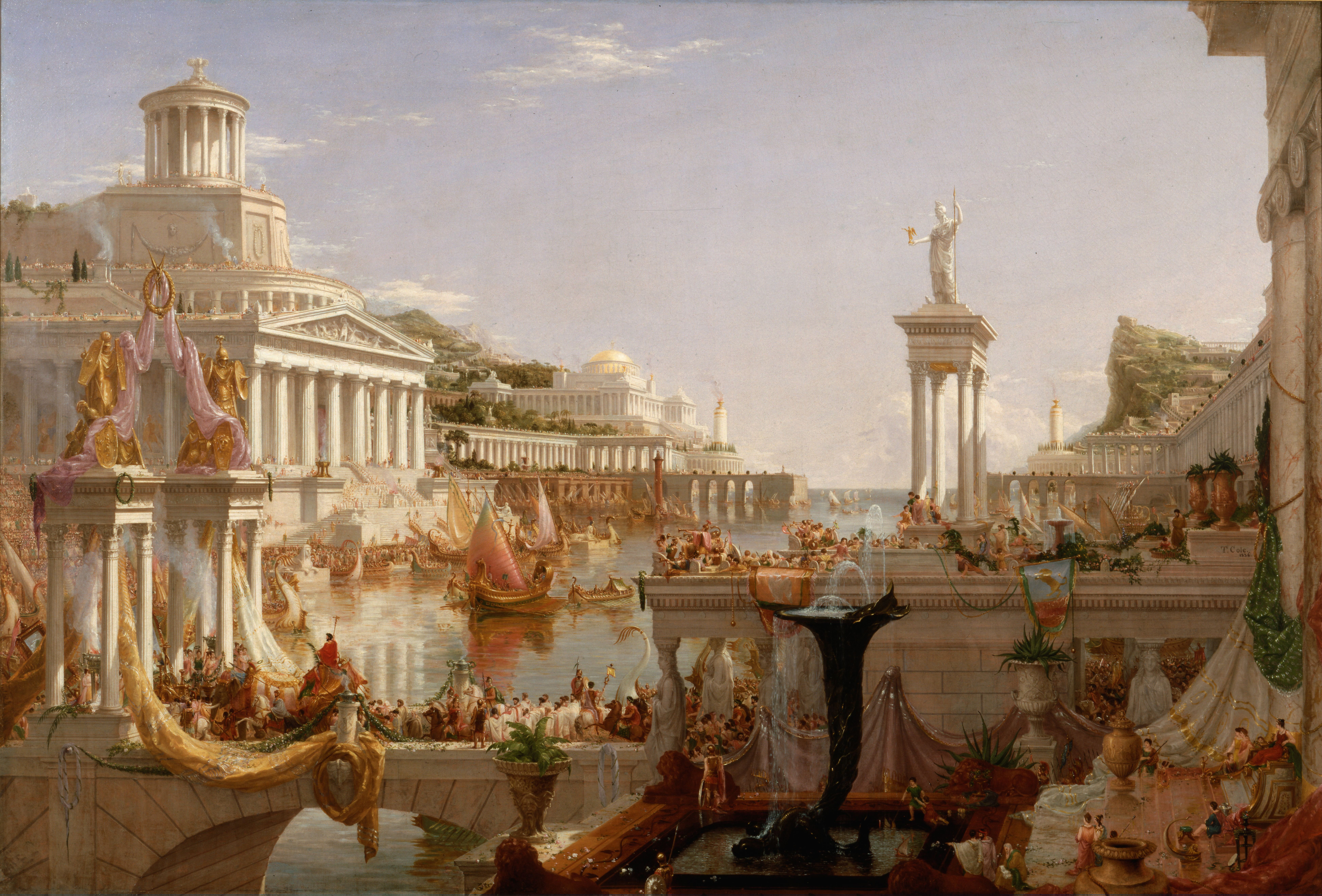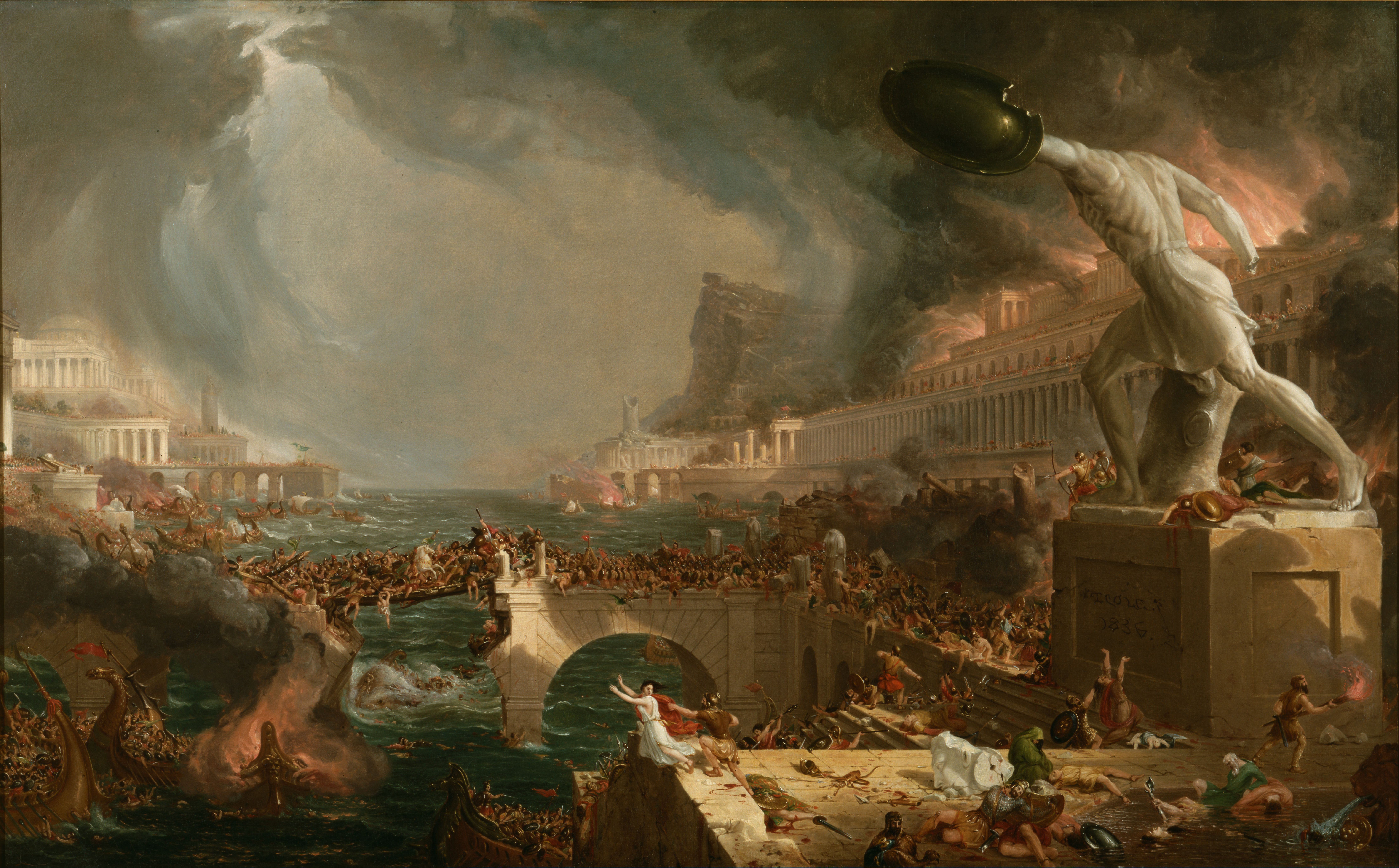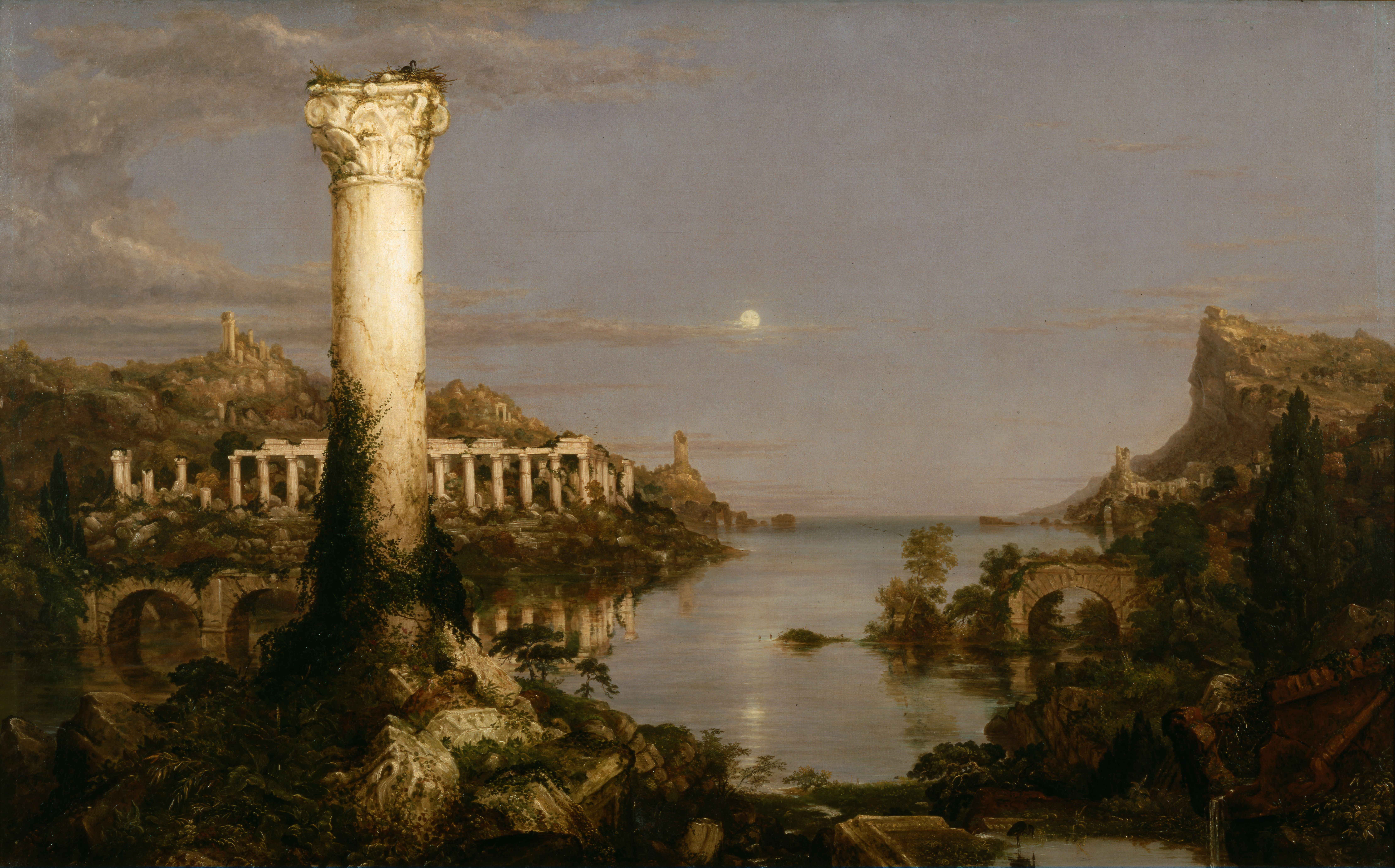Download and print the pamphlet
Six Questions to Better Understand Thomas Cole
Share the wisdom of the Founder of American Art with your friends and family!
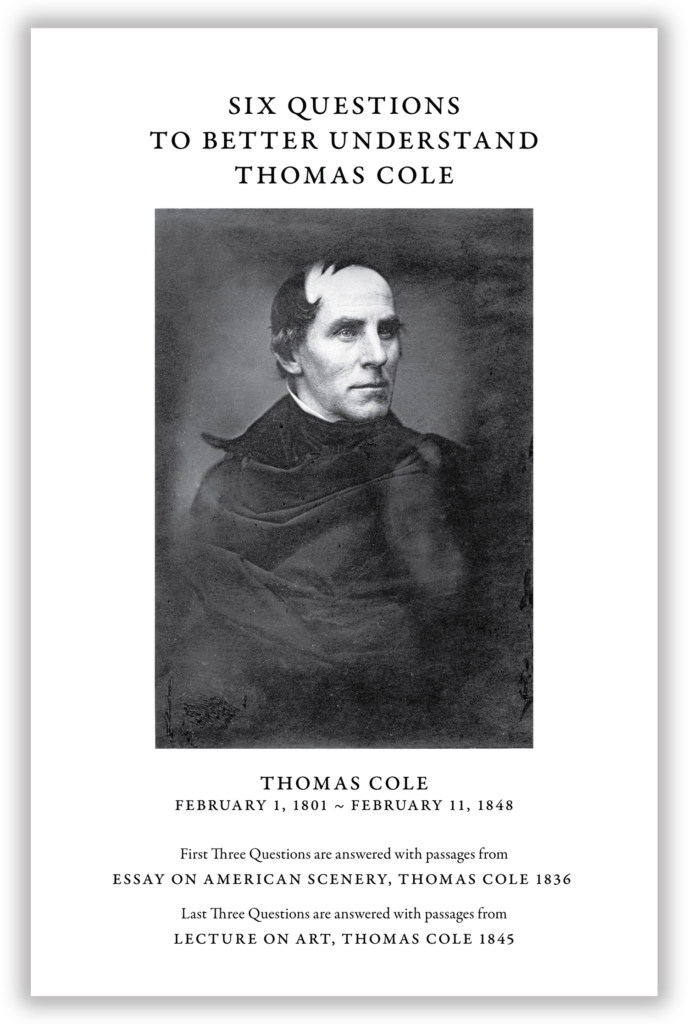
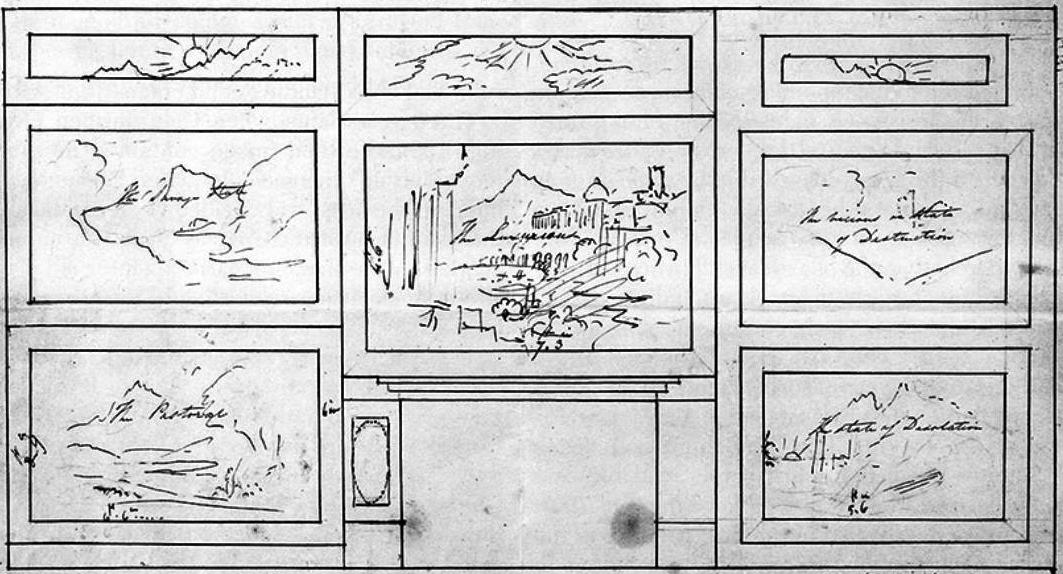
Description by Thomas Cole
No. 1., which may be called the ‘Savage State,’ or ‘the Commencement of Empire,’ represents a wild scene of rocks, mountains, woods, and a bay of the ocean. The sun is rising from the sea, and the stormy clouds of night are dissipating before his rays. On the farthest side of the bay rises a precipitous hill, crowned by a singular isolated rock, which, to the mariner, would ever be a striking land-mark. As the same locality is represented in each picture of the series, this rock identifies it, although the observer’s situation varies in the several pictures. The chase being the most characteristic occupation of savage life, in the fore-ground we see a man attired in skins, in pursuit of a deer, which, stricken by his arrow, is bounding down a water-course. On the rocks in the middle ground are to be seen savages, with dogs, in pursuit of deer. On the water below may be seen several canoes, and on the promontory beyond, are several huts, and a number of figures dancing round a fire. In this picture, we have the first rudiments of society. Men are banded together for mutual aid in the chase, etc. The useful arts have commenced in the construction of canoes, huts, and weapons. Two of the fine arts, music and poetry, have their germs, as we may suppose, in the singing which usually accompanies the dance of savages. The empire is asserted, although to a limited degree, over sea, land, and the animal kingdom. The season represented is Spring.
Description by Thomas Cole
No. 2. – The Simple or Arcadian State, represents the scene after ages have passed. The gradual advancement of society has wrought a change in its aspect. The ‘untracked and rude’ has been tamed and softened. Shepherds are tending their flocks; the ploughman, with his oxen, is upturning the soil, and Commerce begins to stretch her wings. A village is growing by the shore, and on the summit of a hill a rude temple has been erected, from which the smoke of sacrifice is now ascending. In the fore-ground, on the left, is seated an old man, who, by describing lines in the sand, seems to have made some geometrical discovery. On the right of the picture, is a female with a distaff, about to cross a rude stone bridge. On the stone is a boy, who appears, to be making a drawing of a man with a sword, and ascending the road, a soldier is partly seen. Under the trees, beyond the female figure, may be seen a group of peasants; some are dancing, while one plays on a pipe. In this picture, we have agriculture, commerce, and religion. In the old man who describes the mathematical figure – in the rude attempt of the boy in drawing – in the female figure with the distaff—in the vessel on the stocks, and in the primitive temple on the hill, it is evident that the useful arts, the fine arts, and the sciences, have made considerable progress. The scene is supposed to be viewed a few hours after sunrise, and in the early Summer.
Description by Thomas Cole
In the picture No. 3, we suppose other ages have passed, and the rude village has become a magnificent city. The part seen occupies both sides of the bay, which the observer has now crossed. It has been converted into a capacious harbor, at whose entrance, toward the sea, stand two phari. From the water on each hand, piles of architecture ascend – temples, colonnades and domes. It is a day of rejoicing. A triumphal procession moves over the bridge near the fore-ground. The conqueror, robed in purple, is mounted in a car drawn by an elephant, and surrounded by captives on foot, and a numerous train of guards, senators, etc. – pictures and golden treasures are carried before him. He is about to pass beneath the triumphal arch, while girls strew flowers around. Gay festoons of drapery hang from the clustered columns. Golden trophies glitter above in the sun, and incense rises from silver censers. The harbor is alive with numerous vessels – war galleys, and barks with silken sails. Before the doric temple on the left, the smoke of incense and of the altar rise, and a multitude of white-robed priests stand around on the marble steps. The statue of Minerva, with a victory in her hand, stands above the building of the Caryatides, on a columned pedestal, near which is a band with trumpets, cymbals, etc. On the right, near a bronze fountain and in the shadow of lofty buildings, is an imperial personage viewing the procession, surrounded by her children, attendants, and guard. In this scene is depicted the summit of human glory. The architecture, the ornamental embellishments, etc., show that wealth, power, knowledge, and taste have worked together, and accomplished the highest meed of human achievement and empire. As the triumphal fete would indicate, man has conquered man – nations have been subjugated. This scene is represented as near mid-day, in the early Autumn.
Description by Thomas Cole
No. 4.– The picture represents the Vicious State, or State of Destruction. Ages may have passed since the scene of glory – though the decline of nations is generally more rapid than their rise. Luxury has weakened and debased. A savage enemy has entered the city. A fierce tempest is raging. Walls and colonnades have been thrown down. Temples and palaces are burning. An arch of the bridge, over which the triumphal procession was passing in the former scene, has been battered down, and the broken pillars, and ruins of war engines, and the temporary bridge that has been thrown over, indicate that this has been the scene of fierce contention. Now there is a mingled multitude battling on the narrow bridge, whose insecurity makes the conflict doubly fearful. Horses and men are precipitated into the foaming waters beneath; war galleys are contending: one vessel is in flames, and another is sinking beneath the prow of a superior foe. In the more distant part of the harbor, the contending vessels are dashed by the furious waves, and some are burning. Along the battlements, among the ruined Caryatides, the contention is fierce; and the combatants fight amid the smoke and flame of prostrate edifices. In the fore-ground are several dead and dying; some bodies have fallen in the basin of a fountain, tinging the waters with their blood. A female is seen sitting in mute despair over the dead body of her son, and a young woman is escaping from the ruffian grasp of a soldier, by leaping over the battlement; another soldier drags a woman by the hair down the steps that form part of the pedestal of a mutilated colossal statue, whose shattered head lies on the pavement below. A barbarous and destroying enemy conquers and sacks the city. Description of this picture is perhaps needless; carnage and destruction are its elements.
Description by Thomas Cole
The fifth picture is the scene of Desolation. The sun has just set, the moon ascends the twilight sky over the ocean, near the place where the sun rose in the first picture. Day-light fades away, and the shades of evening steal over the shattered and ivy-grown ruins of that once proud city. A lonely column stands near the fore ground, on whose capitol, which is illumined by the last rays of the departed sun, a heron has built her nest. The doric temple and the triumphal bridge, may still be recognised among the ruins. But, though man and his works have perished, the steep promontory, with its insulated rock, still rears against the sky unmoved, unchanged. Violence and time have crumbled the works of man, and art is again resolving into elemental nature. The gorgeous pageant has passed – the roar of battle has ceased – the multitude has sunk in the dust – the empire is extinct.
